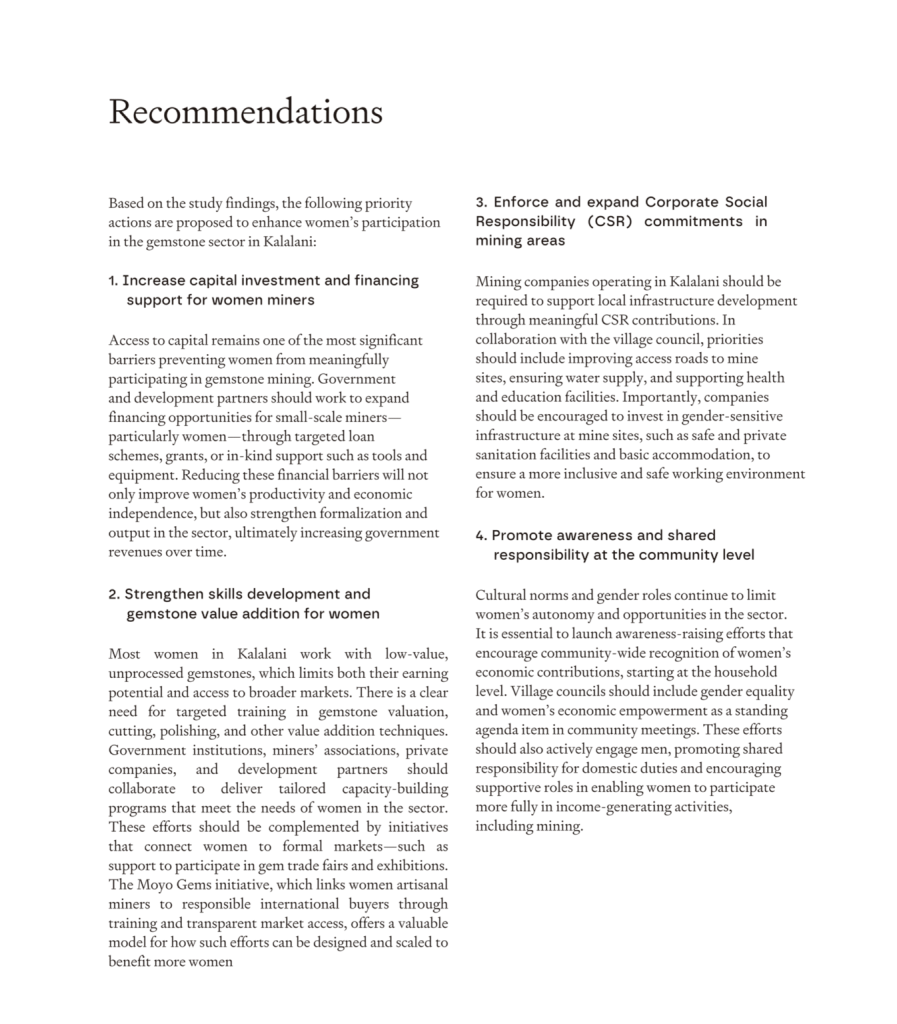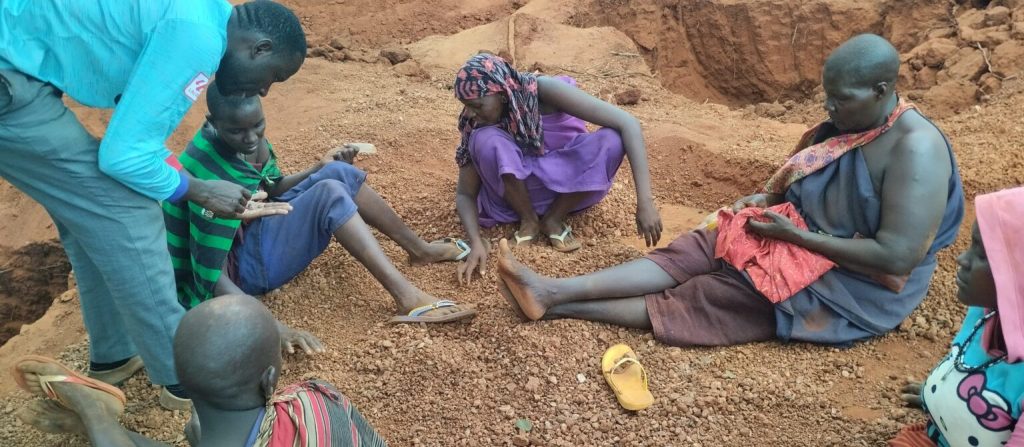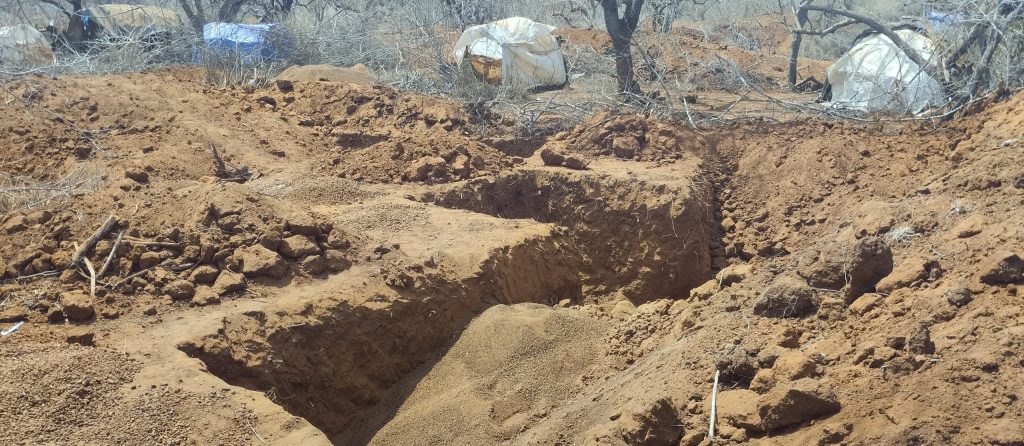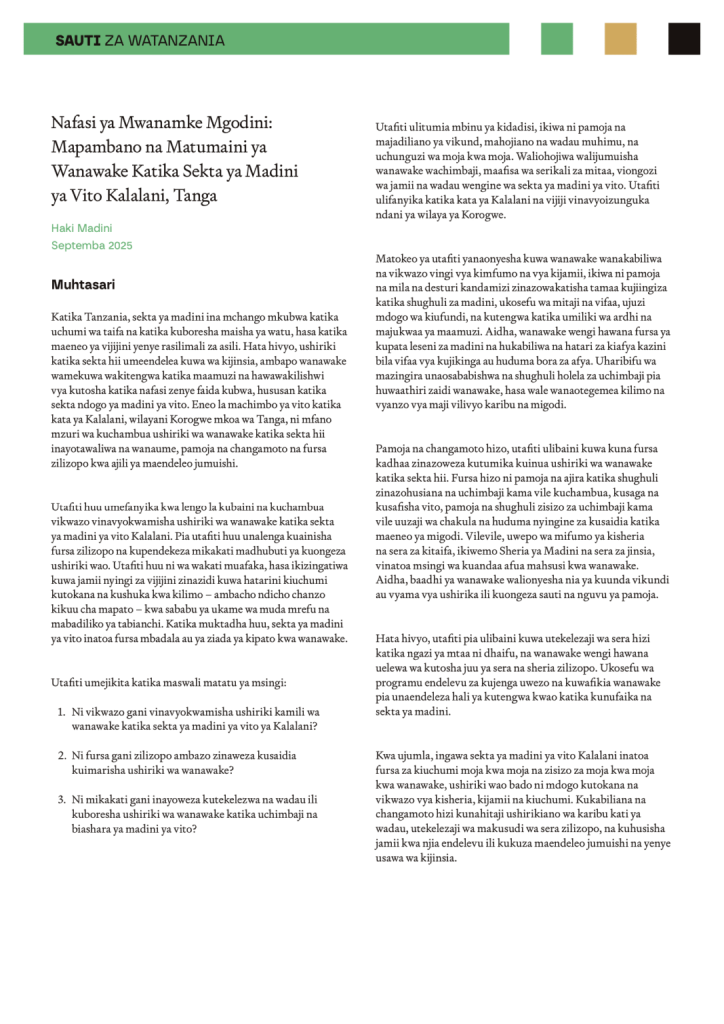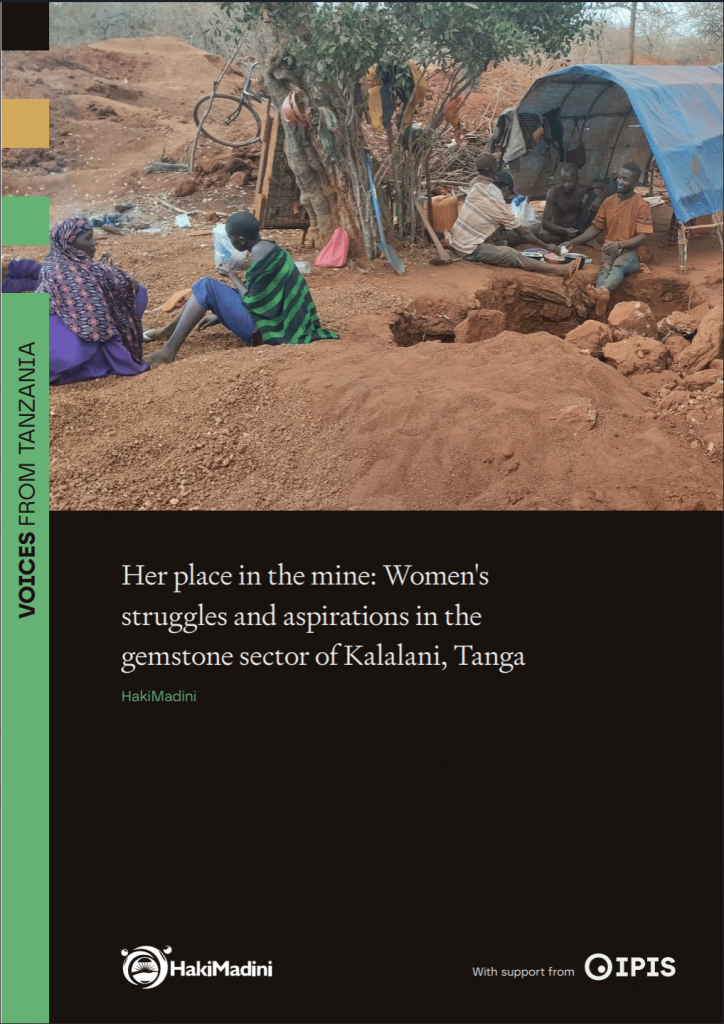
Voices from Tanzania – Her place in the mine: Women’s struggles and aspirations in the gemstone sector of Kalalani, Tanga
This publication is part of IPIS’ Voices from Tanzania series and its edition on “The participation and inclusion of women in Tanzania’s extractive sector”.
In their Voices from Tanzania study HakiMadini sought to identify and analyze the barriers limiting women’s participation in Kalalani’s gemstone sector.
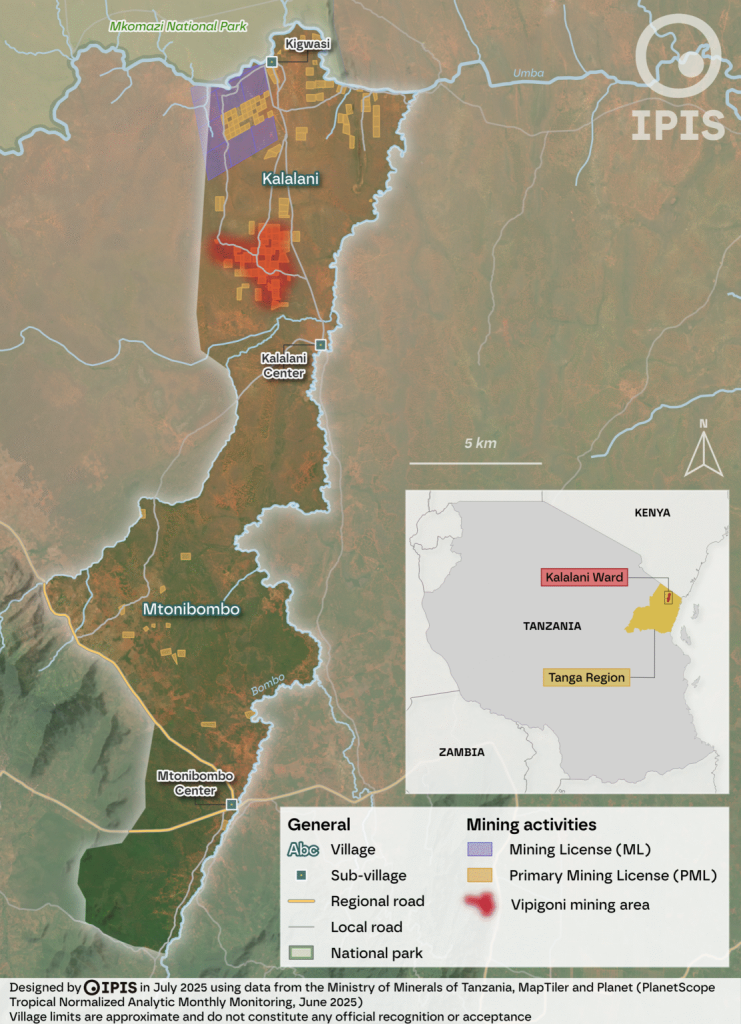
Tanzania is a key source of coloured gemstones, including tsavorite, rubies, and sapphires.
The sector, driven largely by artisanal and small-scale mining (ASM), contributes to the national economy but women—who make up 25–30% of the workforce—are often confined to insecure, low-paying roles and see little of its benefits.
This report, carried out by HakiMadini with methodological and editorial support from IPIS, focuses on Kalalani ward in Tanga region, a long-standing gemstone-producing area.
Based on field research with women miners, it examines the barriers they face, the coping strategies they adopt, and the opportunities that could strengthen their participation.
The findings from the study
Findings show that women face entrenched socio-cultural norms, limited access to resources and licenses, exclusion from decision-making, inadequate skills, and weak health and safety protections. Unregulated mining further harms them through environmental degradation, especially those reliant on farming and water. While opportunities exist in sorting, crushing, washing, and service provision, structural barriers prevent these from becoming sustainable livelihoods.
Yet women are pushing back. In Kalalani, a woman-led mining license has enabled others to join operations, highlighting the potential of collective approaches. Associations such as the Tanzania Women Miners Association (TAWOMA) and the Tanzania Women in Mining and Energy Association (TAREMA) provide vital support, while women’s growing role in local governance creates a platform for greater inclusion.
To unlock women’s potential further, the study calls for coordinated action to enforce existing policies, improving access to finance, equipment, and licenses, investing in training and capacity-building, supporting women’s cooperatives, and strengthening health and safety standards. Addressing these barriers can build a more inclusive gemstone sector that empowers women and supports sustainable community development.
The recommendations
